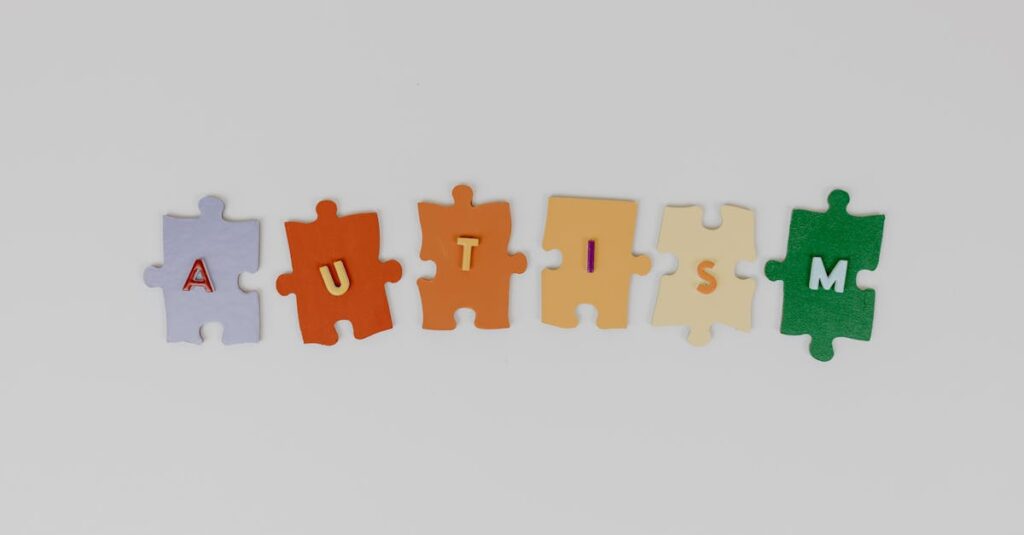In today’s fast-paced world, education faces challenges that could make even the most seasoned teachers pull their hair out. From outdated curriculums to technology that seems to evolve faster than a teenager’s mood swings, navigating the educational landscape has become a Herculean task. It’s like trying to teach a cat to fetch—frustrating yet oddly entertaining.
But don’t let the chaos fool you. These challenges also present opportunities for innovation and growth. With every obstacle comes a chance to rethink and reshape the way we educate. Whether it’s adapting to new learning styles or embracing digital tools, there’s a silver lining hidden in the classroom clutter. So, let’s dive into the hurdles educators face today and explore how they’re turning these bumps in the road into stepping stones for a brighter future.
Table of Contents
ToggleOverview of Challenges in Education Today
Today’s education system faces several significant challenges. Outdated curriculums often fail to meet current industry demands. Technology evolves rapidly, creating a gap between students’ skills and workforce needs. Large class sizes hinder personalized instruction, making it difficult for teachers to address individual student needs. Additionally, varying educational standards across regions lead to disparities in student performance.
Financial constraints add pressure to schools, limiting resources for teachers and students. Many institutions struggle to fund essential programs, especially those focusing on arts and technology. Mental health concerns among students also rise, contributing to distractions in the classroom. These factors create an environment where effective learning becomes challenging.
Incorporating diverse learning styles proves complex in traditional settings. Students often require tailored approaches for optimal engagement. Educators also face pressure to prepare students for standardized tests, sometimes at the cost of creative teaching methods.
Cultural shifts impact classroom dynamics as well. Diverse student backgrounds require sensitive handling of various perspectives. Educators must adapt to inclusivity while fostering a positive learning environment.
Despite these challenges, opportunities exist for innovation. Schools increasingly embrace digital tools, facilitating new learning experiences. Educators transform obstacles into pathways for growth, inspiring creativity in their teaching practices. Collaboration between stakeholders, including parents and communities, presents a chance to reshape educational strategies. Engaging all parties ensures a holistic approach to overcoming barriers in education today.
Key Challenges in the Classroom
Educators today face numerous obstacles that hinder effective teaching. Understanding these challenges is essential for improving educational outcomes.
Teacher Shortages
Teacher shortages significantly impact classroom dynamics. According to the National Center for Education Statistics, the United States may need around 3.2 million new teachers by 2026. This shortage affects student learning when educators must manage larger class sizes. Additionally, inexperienced teachers often fill gaps, which may lead to inconsistent teaching quality. Retaining qualified teachers remains difficult, with many leaving the profession due to challenges such as low salaries and lack of support. Schools struggle to recruit and maintain talented educators. This shortage compromises the ability to provide personalized instruction and cultivate meaningful student relationships.
Student Engagement
Student engagement in today’s classrooms poses another challenge. Many educators find it tough to capture students’ attention amid distractions from technology and social media. Research from Gallup indicates only about 34% of students report feeling engaged in school. Factors impacting engagement include irrelevant curricula and lack of interactive learning environments. Active learning strategies can enhance student involvement; however, not all educators utilize these methods effectively. Engagement fluctuates, influencing academic performance and motivation. Addressing these issues requires innovative approaches to foster meaningful connections between students and their learning experiences.
Technology and Its Impact
Technology significantly alters the educational experience, introducing both advantages and challenges for educators and students alike.
Digital Divide
The digital divide remains a critical issue in education. Approximately 14 million students in the U.S. lack access to reliable internet, limiting their ability to engage with online resources. This gap affects students’ opportunities to learn and thrive in a digital landscape. Rural and low-income students face the most significant barriers. They often struggle to complete assignments and participate in virtual classes due to inadequate tech infrastructure. Addressing the digital divide requires prioritizing equitable access to technology, ensuring all students can benefit from online learning environments.
Online Learning Limitations
Online learning presents various limitations that hinder student engagement. Only 34% of students report feeling engaged in virtual classrooms, which often leads to a lack of motivation. Many courses lack interactivity, making it difficult for students to connect with the material. Additional challenges include technical issues, such as connectivity problems and lack of support for troubleshooting. These factors contribute to feelings of isolation among students. Educators must embrace innovative teaching methods to enhance online learning experiences, providing interactive and supportive environments that foster meaningful connections.
Societal Influences on Education
Societal factors significantly affect educational experiences and outcomes. Two primary influences are economic disparities and family dynamics.
Economic Disparities
Economic disparities create uneven educational landscapes. Schools in affluent areas often have access to advanced resources, like technology and extracurricular activities. In contrast, low-income schools may lack essential tools, which negatively impacts student performance. Approximately 14 million students in the U.S. face challenges due to this divide. Lower funding often results in larger class sizes and reduced support services, complicating personalized education. Moreover, students in poverty may experience increased stressors, leading to difficulties focusing on their studies. These economic differences reinforce the need for more equitable funding models to ensure all students receive high-quality education regardless of their background.
Family Dynamics
Family dynamics play a crucial role in a child’s educational journey. Supportive families tend to inspire greater student engagement and success. In contrast, students from unstable family environments often face challenges. Some may encounter barriers to attendance and homework completion due to varying parental involvement. Additionally, parental education levels significantly impact children’s academic performance. Families with lower educational backgrounds may lack the resources or knowledge to support their children’s learning effectively. Schools can bridge this gap by fostering partnerships with families, providing resources and workshops to enhance parental engagement. This collaboration strengthens the educational ecosystem and supports every child’s success.
Policy and Governance Issues
Policy and governance issues significantly impact education today. Each challenge influences how effectively schools operate and respond to students’ needs.
Funding Inequities
Funding inequities create substantial disparities among schools. Affluent districts often access advanced resources, while low-income areas might lack essential tools. This divide affects approximately 14 million students in the U.S., leading to inequitable learning experiences. Schools in wealthier regions receive more funding per student, enabling them to provide better facilities and programs. In contrast, less funded schools struggle with basic necessities, which negatively impacts student performance. Enhanced funding models can address these issues and promote equitable resources across districts.
Standardized Testing Concerns
Standardized testing raises significant concerns in the education landscape. Many educators question whether these tests accurately reflect students’ knowledge and abilities. Pressure to perform often detracts from meaningful learning experiences. Additionally, only a small percentage of students report feeling engaged, with roughly 34% indicating they enjoy school. High-stakes testing can exacerbate this lack of engagement, as students prioritize test preparation over genuine learning. Moving towards holistic assessment methods may encourage deeper understanding and critical thinking skills, benefiting students’ overall educational journeys.
The challenges in education today are multifaceted and require urgent attention. From outdated curriculums to financial constraints and teacher shortages, the obstacles are significant. However, these difficulties also present opportunities for innovation and growth.
By embracing new teaching methods and fostering partnerships with families, educators can create more engaging and inclusive learning environments. Addressing the digital divide and advocating for equitable funding can help ensure that all students have access to quality education.
Ultimately, overcoming these challenges is essential for nurturing future generations and preparing them for success in an ever-evolving world.





